-
 Bitcoin
Bitcoin $101,898.5005
-0.75% -
 Ethereum
Ethereum $2,258.1125
-1.07% -
 Tether USDt
Tether USDt $1.0004
0.01% -
 XRP
XRP $2.0178
-2.93% -
 BNB
BNB $624.0243
-1.53% -
 Solana
Solana $134.3298
-0.90% -
 USDC
USDC $0.9999
0.01% -
 TRON
TRON $0.2675
-2.05% -
 Dogecoin
Dogecoin $0.1538
-1.96% -
 Cardano
Cardano $0.5482
-1.11% -
 Hyperliquid
Hyperliquid $35.5636
5.45% -
 Bitcoin Cash
Bitcoin Cash $453.4902
-1.66% -
 Sui
Sui $2.5134
-2.97% -
 UNUS SED LEO
UNUS SED LEO $9.1292
1.77% -
 Chainlink
Chainlink $11.8457
-1.60% -
 Stellar
Stellar $0.2312
-2.73% -
 Avalanche
Avalanche $16.9721
0.29% -
 Toncoin
Toncoin $2.7549
-3.82% -
 Shiba Inu
Shiba Inu $0.0...01081
-1.10% -
 Litecoin
Litecoin $80.8250
-0.71% -
 Hedera
Hedera $0.1374
0.21% -
 Monero
Monero $305.4827
-2.36% -
 Ethena USDe
Ethena USDe $1.0006
0.00% -
 Dai
Dai $1.0000
-0.01% -
 Polkadot
Polkadot $3.2085
-3.12% -
 Bitget Token
Bitget Token $4.0845
-3.13% -
 Uniswap
Uniswap $6.3353
-1.63% -
 Pi
Pi $0.5085
-0.70% -
 Pepe
Pepe $0.0...08913
-3.82% -
 Aave
Aave $232.7090
-0.58%
How to combine Vol indicator and volume column? Is it more accurate?
Combining volume indicators and columns can offer a detailed view of market activity, but accuracy depends on the trader's skill and market conditions.
May 23, 2025 at 04:56 pm
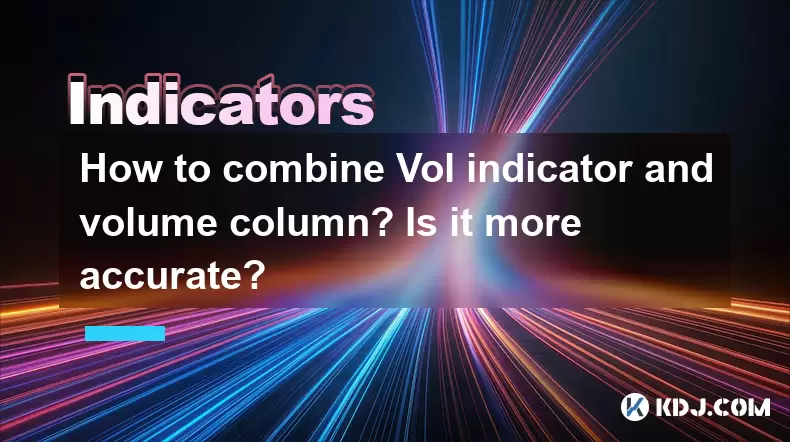
Introduction to Volume Indicators and Volume Columns
In the world of cryptocurrency trading, understanding the dynamics of volume can be crucial for making informed decisions. Volume indicators and volume columns are two essential tools that traders use to gauge market activity. Volume indicators provide a visual representation of trading volume over time, helping traders to identify trends and potential reversals. On the other hand, volume columns are a straightforward way to display the raw volume data for each trading period. Combining these two can offer a more comprehensive view of market activity, but the question remains: Is it more accurate?
Understanding Volume Indicators
Volume indicators are technical analysis tools that traders use to assess the strength of price movements. Common volume indicators include the Volume Oscillator (VO), On-Balance Volume (OBV), and Chaikin Money Flow (CMF). Each of these indicators processes volume data differently to provide insights into market trends.
- Volume Oscillator (VO): This indicator calculates the difference between two moving averages of volume. It helps traders identify whether volume is increasing or decreasing over time, which can signal the strength of a trend.
- On-Balance Volume (OBV): OBV adds or subtracts the day's volume to a running total based on whether the price closes higher or lower than the previous day. It is used to confirm price trends and detect potential reversals.
- Chaikin Money Flow (CMF): CMF combines price and volume to measure the buying and selling pressure for a given period. It helps traders understand the flow of money into or out of a security.
Understanding Volume Columns
Volume columns, on the other hand, are a simple and direct way to display volume data. Typically, these columns are represented as vertical bars on a chart, with the height of each bar corresponding to the volume traded during a specific period. Volume columns provide an immediate visual cue of trading activity, allowing traders to quickly assess whether volume is increasing or decreasing over time.
Combining Volume Indicators and Volume Columns
To combine volume indicators and volume columns effectively, traders need to integrate these tools into their analysis process. Here’s how to do it:
- Choose a Volume Indicator: Select a volume indicator that aligns with your trading strategy. For example, if you're interested in trend confirmation, OBV might be a good choice. If you're looking to measure the strength of volume changes, VO could be more suitable.
- Add Volume Columns to Your Chart: Most trading platforms allow you to add volume columns to your chart. This can usually be done by selecting the volume option in the chart settings.
- Analyze the Data: With both the volume indicator and volume columns displayed on your chart, you can start to analyze the data. Look for correlations between the volume columns and the volume indicator. For instance, if the volume columns show a significant increase in volume, and the volume indicator confirms this with a rising trend, it may indicate strong market interest.
- Confirm Trends and Reversals: Use the combined data to confirm trends and potential reversals. If the volume columns show high volume during a price increase, and the volume indicator supports this with a bullish signal, it strengthens the case for a continuing uptrend.
Accuracy of Combining Volume Indicators and Volume Columns
The accuracy of combining volume indicators and volume columns largely depends on the trader's ability to interpret the data correctly. By using both tools, traders can gain a more nuanced understanding of market dynamics. Volume indicators provide a processed view of volume data, helping to highlight trends and potential reversals. Volume columns offer a raw, unfiltered look at trading activity, allowing traders to see the actual volume levels.
However, combining these tools does not guarantee increased accuracy. It is still possible for traders to misinterpret the data or to encounter false signals. The effectiveness of this approach depends on the trader's skill level, the quality of the volume data, and the specific market conditions.
Practical Example of Combining Volume Indicators and Volume Columns
Let's walk through a practical example of how to combine volume indicators and volume columns using a popular trading platform:
- Select Your Chart: Open your trading platform and select the cryptocurrency pair you want to analyze.
- Add Volume Columns: Navigate to the chart settings and add the volume columns to the bottom of your price chart.
- Choose a Volume Indicator: Add a volume indicator to your chart. For this example, let's use the Volume Oscillator (VO).
- Analyze the Data: Observe the price chart, volume columns, and VO. Look for periods where the volume columns show a significant increase in volume. Check if the VO confirms this increase with a rising trend.
- Interpret the Signals: If you see high volume during a price increase, and the VO is also trending upwards, it may indicate strong buying pressure and a potential continuation of the uptrend.
Conclusion and Considerations
While combining volume indicators and volume columns can provide a more detailed view of market activity, it is essential for traders to consider the following:
- Market Conditions: The effectiveness of this approach can vary depending on market volatility and liquidity.
- Trading Strategy: The choice of volume indicator should align with your overall trading strategy.
- Data Quality: Ensure that the volume data provided by your trading platform is accurate and reliable.
Frequently Asked Questions
Q1: Can volume indicators be used without volume columns?
Yes, volume indicators can be used independently of volume columns. Volume indicators process volume data to provide insights into market trends and potential reversals. However, using them in conjunction with volume columns can offer a more comprehensive view of market activity.
Q2: How often should I check the volume data?
The frequency of checking volume data depends on your trading style. Day traders might check volume data multiple times throughout the day, while swing traders might review it less frequently, such as daily or weekly.
Q3: Are there any specific volume indicators that work better with certain cryptocurrencies?
The effectiveness of volume indicators can vary depending on the liquidity and trading volume of the cryptocurrency. For highly liquid cryptocurrencies like Bitcoin, most volume indicators will work well. For less liquid cryptocurrencies, you might need to adjust your analysis to account for lower trading volumes.
Q4: Can combining volume indicators and volume columns help in predicting price movements?
While combining volume indicators and volume columns can provide valuable insights into market trends and potential reversals, it does not guarantee accurate predictions of price movements. It is one of many tools traders use to make informed decisions, and its effectiveness depends on the trader's skill and market conditions.
Disclaimer:info@kdj.com
The information provided is not trading advice. kdj.com does not assume any responsibility for any investments made based on the information provided in this article. Cryptocurrencies are highly volatile and it is highly recommended that you invest with caution after thorough research!
If you believe that the content used on this website infringes your copyright, please contact us immediately (info@kdj.com) and we will delete it promptly.
- Cryptocurrencies, Coingecko, and Trending Tokens: What's Hot Now?
- 2025-06-23 23:05:12
- Bitcoin, Meerkat, and Onchain Engagement: A New Era of Crypto
- 2025-06-23 23:25:12
- Cloud Mining, Bitcoin, and XRP: A 2025 Perspective
- 2025-06-23 23:25:12
- Neo Pepe Coin: Meme Crypto with Explosive Potential?
- 2025-06-23 23:45:12
- FUNToken: Decoding Past Trends and Getting Started in the Gaming Crypto Sphere
- 2025-06-23 22:25:12
- Eyenovia Goes Crypto: A HYPE Treasury and Potential Rebrand
- 2025-06-23 23:45:12
Related knowledge

Is it contradictory that the moving average system is arranged in a bullish pattern but the DMI shows a decline in trend strength?
Jun 23,2025 at 11:43pm
Understanding the Moving Average and DMI RelationshipIn cryptocurrency trading, technical analysis plays a crucial role in identifying potential trends and making informed decisions. Two of the most commonly used indicators are the Moving Average (MA) and the Directional Movement Index (DMI). While both tools aim to provide insight into market direction...

What is the significance of the gap formed by the gap opening not being filled within five days?
Jun 23,2025 at 09:42pm
Understanding Gaps in Cryptocurrency TradingIn the world of cryptocurrency trading, a gap refers to a situation where the price of an asset jumps from one level to another without any trading activity occurring between those two levels. This often happens over weekends or holidays when the market is closed, and significant news or events occur that impa...
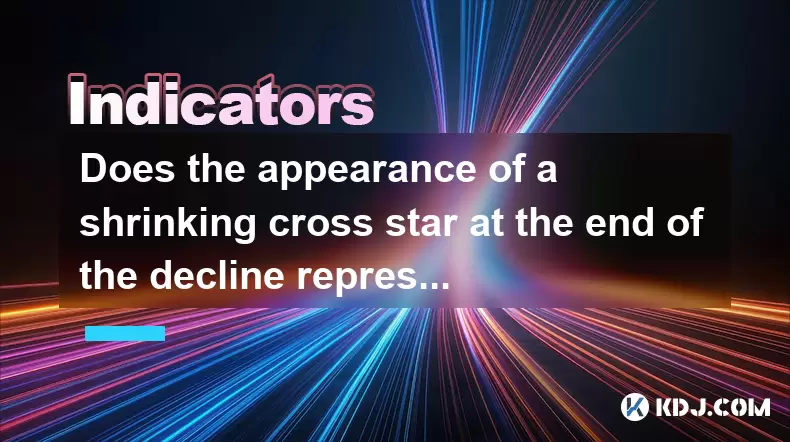
Does the appearance of a shrinking cross star at the end of the decline represent a signal to stop the decline?
Jun 24,2025 at 12:14am
Understanding the Shrinking Cross Star PatternIn the world of cryptocurrency trading, candlestick patterns play a crucial role in technical analysis. One such pattern is the shrinking cross star, which often appears at the end of a downtrend. This pattern consists of a candle with a small body, typically appearing after a series of bearish candles, and ...
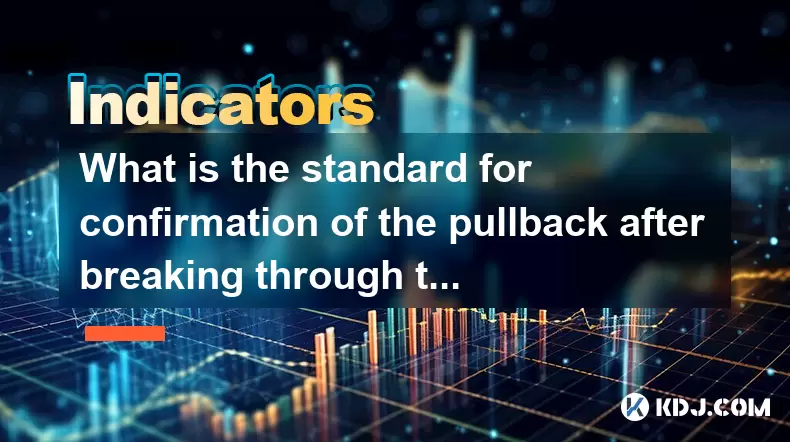
What is the standard for confirmation of the pullback after breaking through the neckline with large volume?
Jun 23,2025 at 11:28pm
Understanding the Neckline in Technical AnalysisIn technical analysis, the neckline is a critical support or resistance level that appears in chart patterns such as head and shoulders, double tops, and double bottoms. It typically connects two or more lows (in the case of a head and shoulders top) or highs (in the case of a head and shoulders bottom). W...
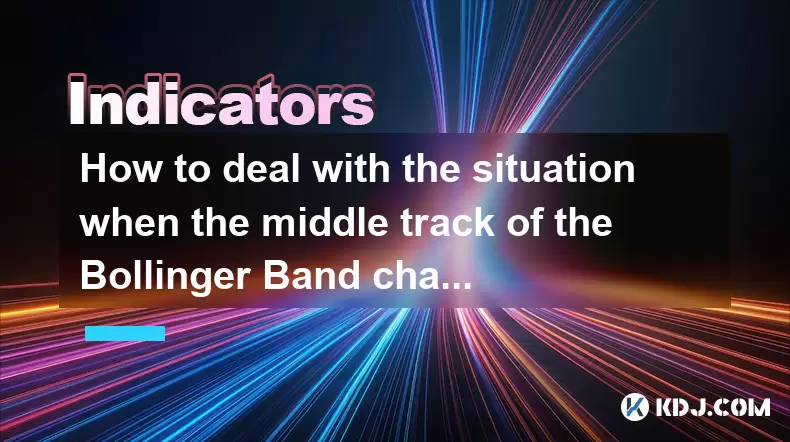
How to deal with the situation when the middle track of the Bollinger Band changes from support to resistance?
Jun 23,2025 at 11:22pm
Understanding the Bollinger Band Middle TrackThe Bollinger Band is a widely used technical indicator in cryptocurrency trading. It consists of three lines: the upper band, the lower band, and the middle track, which is typically a 20-period simple moving average (SMA). Traders often rely on the middle track as a dynamic support or resistance level. Howe...
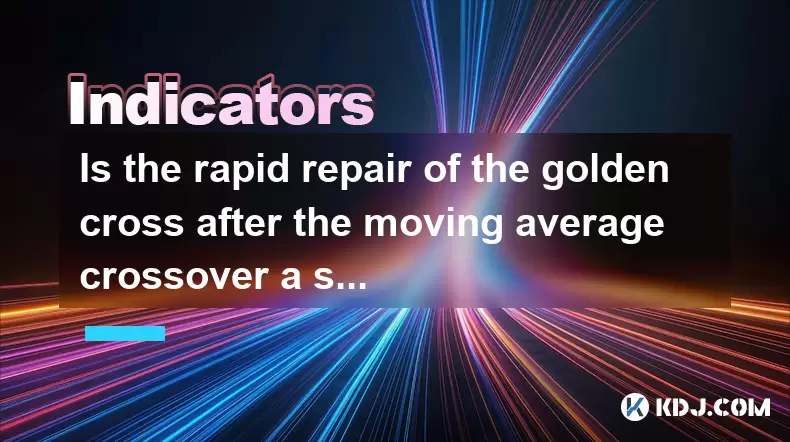
Is the rapid repair of the golden cross after the moving average crossover a signal of inducing short selling?
Jun 24,2025 at 12:01am
Understanding Moving Averages and Their Role in Technical AnalysisIn the realm of technical analysis, moving averages (MAs) are among the most widely used tools by traders to identify trends and potential reversals. These indicators smooth out price data over a specific time period, offering a clearer view of market direction. The two most common types ...

Is it contradictory that the moving average system is arranged in a bullish pattern but the DMI shows a decline in trend strength?
Jun 23,2025 at 11:43pm
Understanding the Moving Average and DMI RelationshipIn cryptocurrency trading, technical analysis plays a crucial role in identifying potential trends and making informed decisions. Two of the most commonly used indicators are the Moving Average (MA) and the Directional Movement Index (DMI). While both tools aim to provide insight into market direction...

What is the significance of the gap formed by the gap opening not being filled within five days?
Jun 23,2025 at 09:42pm
Understanding Gaps in Cryptocurrency TradingIn the world of cryptocurrency trading, a gap refers to a situation where the price of an asset jumps from one level to another without any trading activity occurring between those two levels. This often happens over weekends or holidays when the market is closed, and significant news or events occur that impa...

Does the appearance of a shrinking cross star at the end of the decline represent a signal to stop the decline?
Jun 24,2025 at 12:14am
Understanding the Shrinking Cross Star PatternIn the world of cryptocurrency trading, candlestick patterns play a crucial role in technical analysis. One such pattern is the shrinking cross star, which often appears at the end of a downtrend. This pattern consists of a candle with a small body, typically appearing after a series of bearish candles, and ...

What is the standard for confirmation of the pullback after breaking through the neckline with large volume?
Jun 23,2025 at 11:28pm
Understanding the Neckline in Technical AnalysisIn technical analysis, the neckline is a critical support or resistance level that appears in chart patterns such as head and shoulders, double tops, and double bottoms. It typically connects two or more lows (in the case of a head and shoulders top) or highs (in the case of a head and shoulders bottom). W...

How to deal with the situation when the middle track of the Bollinger Band changes from support to resistance?
Jun 23,2025 at 11:22pm
Understanding the Bollinger Band Middle TrackThe Bollinger Band is a widely used technical indicator in cryptocurrency trading. It consists of three lines: the upper band, the lower band, and the middle track, which is typically a 20-period simple moving average (SMA). Traders often rely on the middle track as a dynamic support or resistance level. Howe...

Is the rapid repair of the golden cross after the moving average crossover a signal of inducing short selling?
Jun 24,2025 at 12:01am
Understanding Moving Averages and Their Role in Technical AnalysisIn the realm of technical analysis, moving averages (MAs) are among the most widely used tools by traders to identify trends and potential reversals. These indicators smooth out price data over a specific time period, offering a clearer view of market direction. The two most common types ...
See all articles
























































































